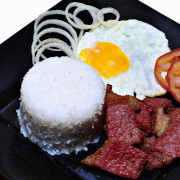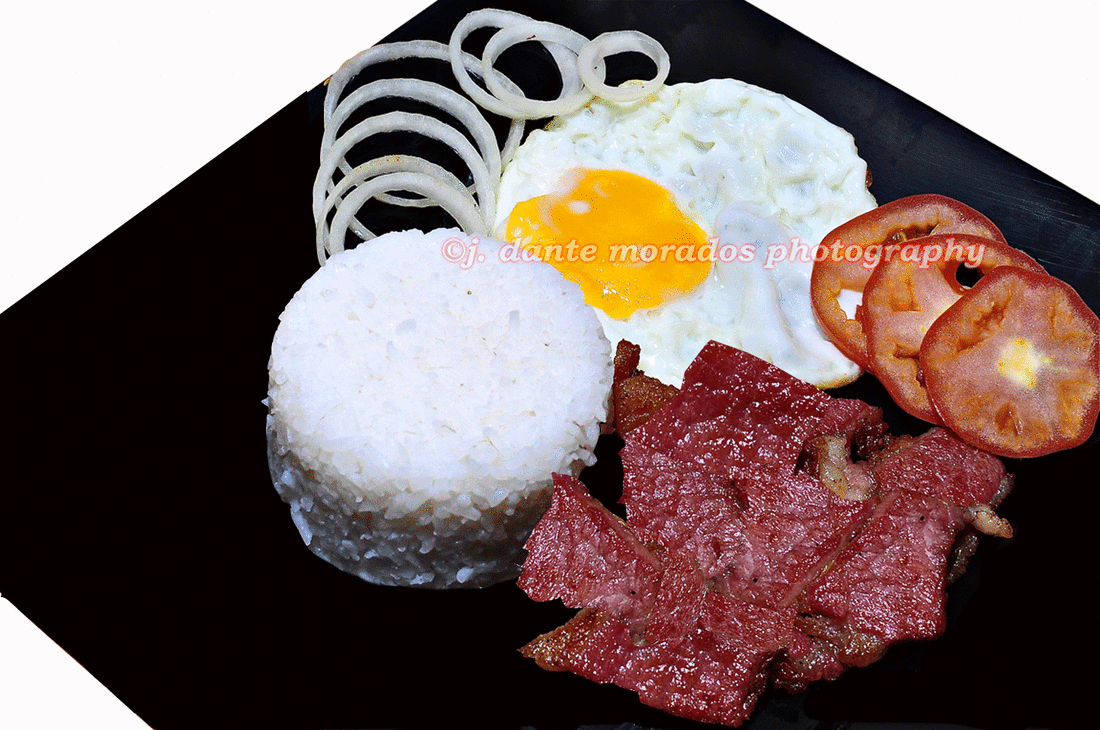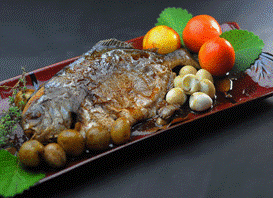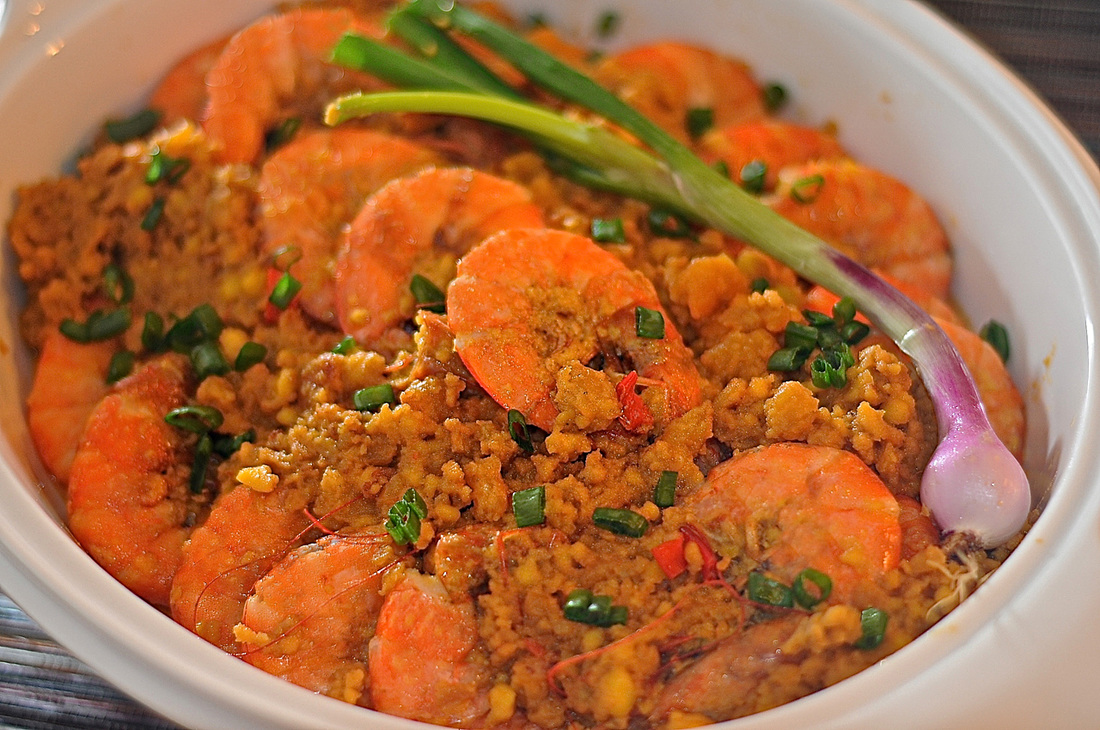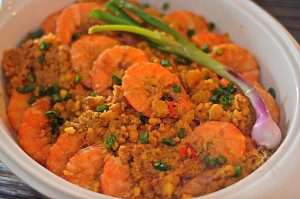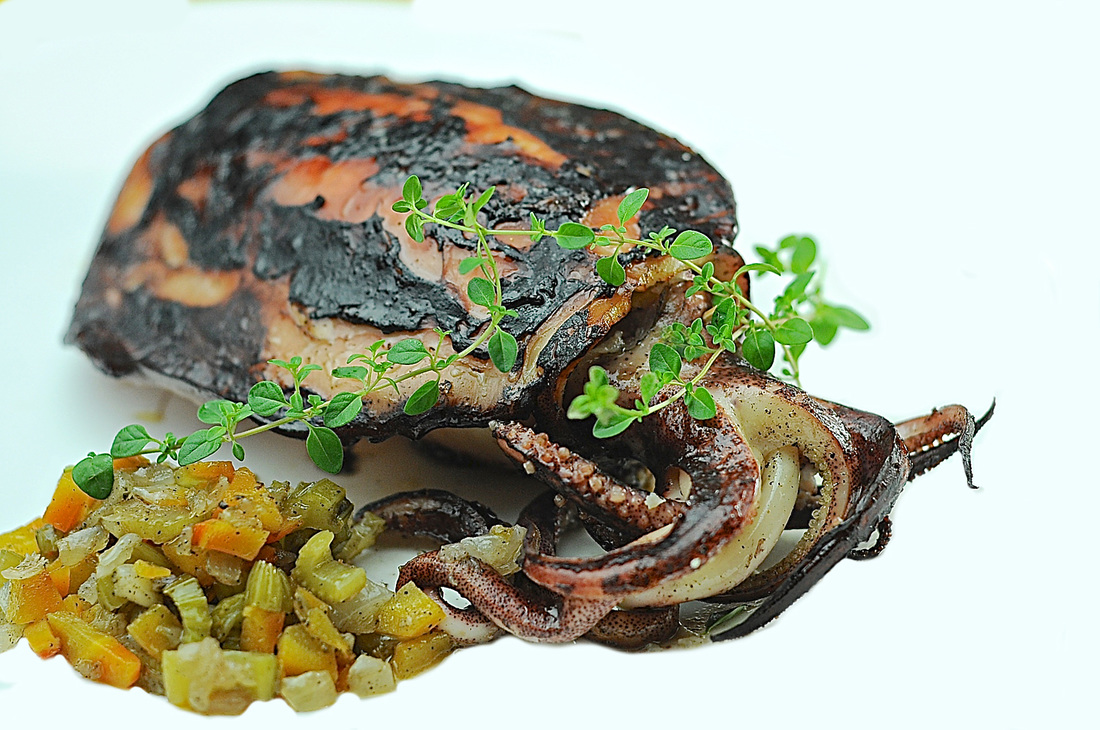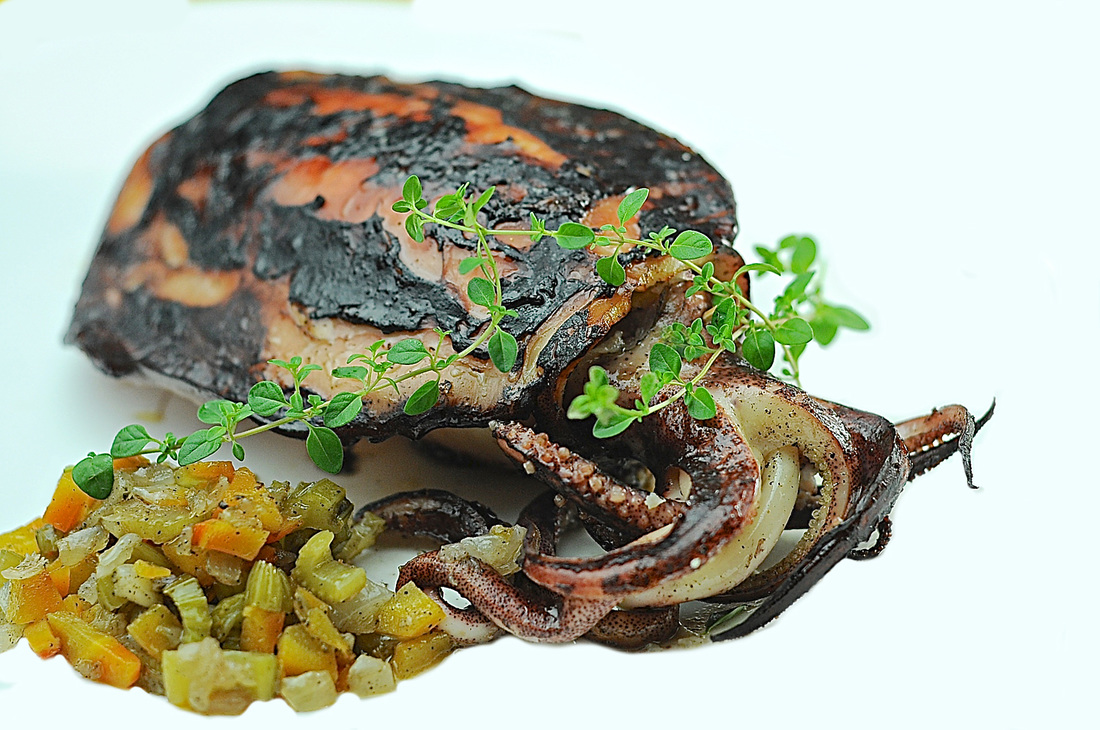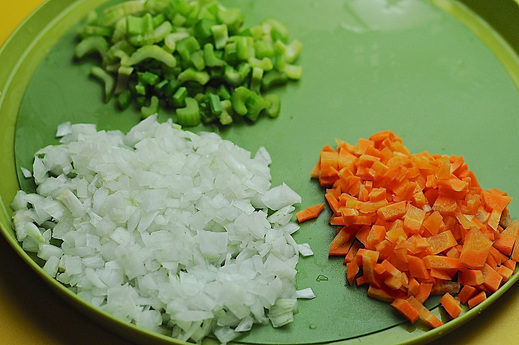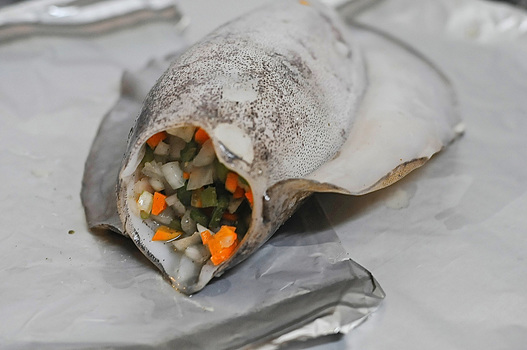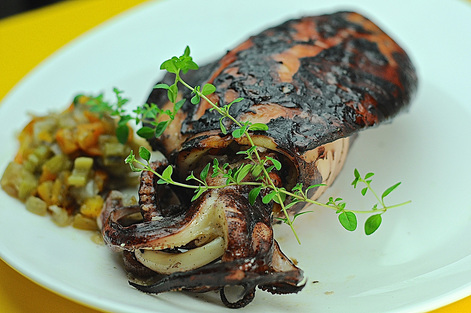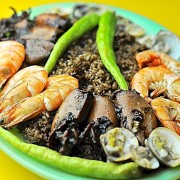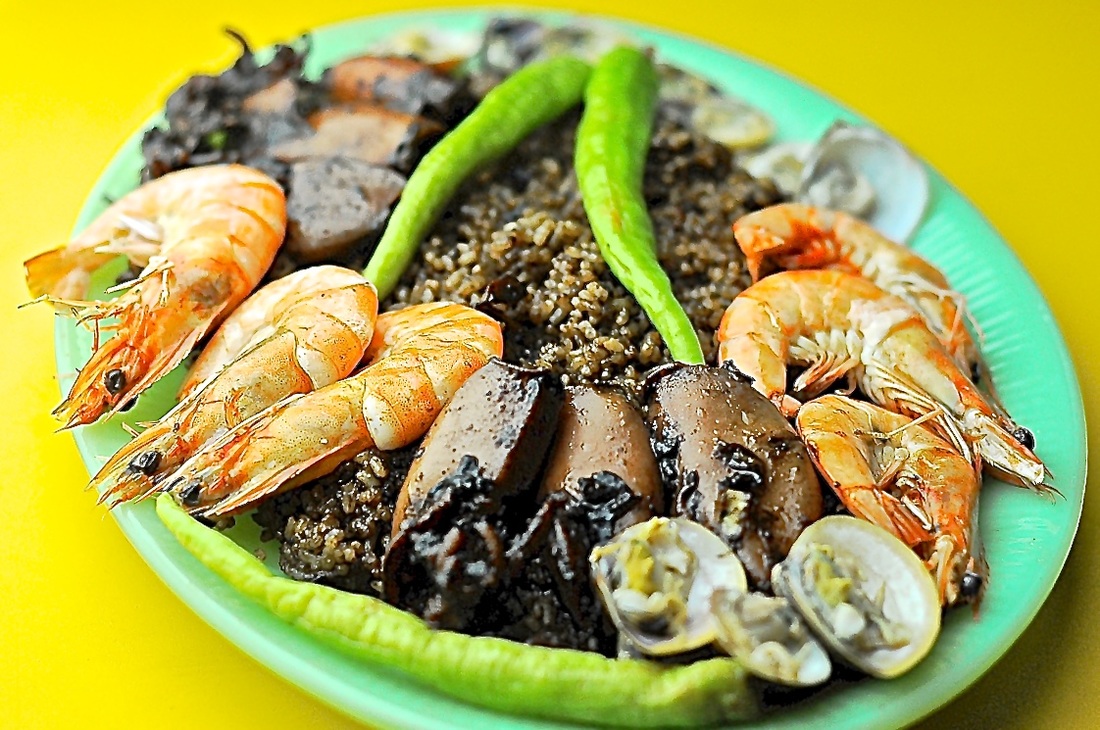“ADOBONG PUSIT RICE” AND STEAMED SEAFOOD
(RICE COOKED IN SAUCE OF SQUID FRIED & STEWED IN GARLIC-SOYA-
VINEGAR TOPPED WITH STEAMED SEAFOOD)
This is an innovation of “arros’ negre”, “arroz negro” or “seafood paella”
which utilizes squid or cuttlefish ink added to white rice.
Here, ink sac is removed and squid is fried then stewed “Adobo” style.
Squid’s color as well as end result for that of rice is natural.
An offshoot of frying, sautéing and stewing in soy sauce.
Seafood is served as topping NOT incorporated into the rice.
Colored rice is served garnished with “Adobong Pusit”, steamed
shrimps, clams and some colorful veggies you may wish.
Prep time: 45 mins.
Cook time: 45 mins.
Total time: 1 hour 30 mins.
Makes/Serves: 4
Cooking medium: frying pan or wok, steamer
Special instruction(s): be ready with those special smiles from your loved ones.
INGREDIENTS:
1/2 kilo small pinkish round Indian squid or “Pusit Lumot” (dark large bigfin reef specie).
Fully cleaned, inc sac and “pen” (the whitish plastic-like thingy at its back) removed.
OTHER SEAFOOD SOAKED IN 320ml. 7-UP or SPRITE for 15 MINUTES then DRAINED
¼ kilo medium shrimps-large tentacles cut
½ kilo fresh clams-soak in tap water minimum of 30 minutes to expel sand and sea odor
then soaked in 7-up or Sprite
FOR ADOBO:
6 cloves sliced garlic
1 medium onion-sliced
50 ml. EVOO (Extra Virgin Olive Oil)
40 ml. soy sauce
10 ml. vinegar (cane or palm or any)
15 ml. tap water
2 grams salt
2 grams ground black pepper
3 pcs. bay leaves
10 grams brown sugar
OPTIONAL 2 grams MSG
FOR RICE:
250 grams Japanese rice or should this be not available…150 grams of your usual white rice added with 100 grams “malagkit na bigas” (sticky rice)
enough water to cook the rice. Cook and set aside.
PROCEDURES:
1. Brown a bit garlic and onion slices in heated EVOO. Add in squid, half of salt, half of black pepper, brown sugar, bay
leaves, OPTIONAL MSG and, stirring-tumbling constantly, sauté/fry until they become dark brown.
This process will elicit full-flavor absorption by squid.
2. Add in soy sauce, vinegar and water and bring to boil.
3. When desired tenderness and taste are achieved, scoop out squid and set aside. The sauce in the same pan/wok
will be used to coat rice.
4. Lower heat temp to low and, into sauce, add rice in small batches while constantly tossing and tumbling that sticking to
bottom is minimized or totally prevented. Doing this system will enable you to coat each and every rice grain with your
“Adobo sauce” than dumping all rice in 1 time.
5. In suitable steamer, boil enough water underneath. Lay drained shrimps and clams in slotted bowl and cook atop
steamer until desired state is reached. This will be about 10-15 minutes.
6. Beautifully arrange in plate, top or side ”Adobo rice” with steamed seafood and enticingly garnish as desired.
7. Watch your loved ones enjoy this new prep.
DISCLAIMER: Above are test kitchen and household-produced dishes. All ingredients utilized are of food grade quality passing international and domestic sanitary standards. While we find the results highly acceptable, no guarantee nor explicit assurance is hereby issued when recipe is performed by readers. For one, although of similar breed, spices, herbs and other ingredients vary from country to country/region to region that possibility of affecting end taste, aroma & bite-feel is great. Further thereto, mentioned sensory evaluation (aroma, taste, mouth-feel) is subjective.


